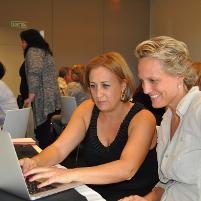At the end of 2020 the House of Commons Select Committee on Education published its Plan for an Adult Skills and Lifelong Learning Revolution. This was quickly followed by a Government White Paper Skills for Jobs: Lifelong Learning for Opportunity and Growth and then a more detailed consideration of each of the Select Committee’s main recommendations. In September of the same year (2021), the government announced plans for a ‘lifelong loan entitlement’, with a White Paper on the plans finally appearing in February this year (2022). Although the government’s travails appear to have eclipsed ‘ordinary business’ such as this, we must suppose that the prospect of policy action has not been pushed too far into the future.
There is a deliberate note of urgency in the title of the Select Committee report (‘revolution’ not reform). It is very critical of the ‘state of disrepair’ into which the adult education/lifelong learning sector has fallen; it is critical of the way in which successive governments have allowed this to happen; and it is critical of the low priority given by recent governments to developing a strategic response to the implications of current technological trends for changes in skills needed in work as large numbers of ‘old-style’ jobs disappear. This last point is now a familiar one, not least in this blog. And here are two estimates intended to illustrate this last challenge for the UK. In 2020, the CBI published a report which reckoned that nine out of ten employees will need to reskill by 2030 at an additional cost of £13 billion a year. NESTA, in their response to the Select Committee’s call for evidence on lifelong learning, point out that one-fifth of the UK workforce are currently in occupations that are likely to shrink over the next ten years.
Since 2019, when the Select Committee announced its inquiry into lifelong learning, several reports have appeared on this topic, and they generally agree not only that something needs to be done, but that what is required is more than tinkering, more even than some additional funding: radical change to prepare for the future.
For three centuries, the UK’s education system has had a singular – and very successful – focus: developing cognitive skills in the young. That model is not fit for tomorrow’s purpose. The education system of tomorrow needs to span the generational spectrum – young to old – and the skills spectrum – cognitive to vocational to interpersonal (from the Chief Economist to the Bank of England).
More public investment is indeed needed, but so is a strategic vision about how to make this investment pay off for older adults, and especially perhaps for older workers. The way that the Select Committee makes its case for public investment in lifelong learning is laid out in terms of specific challenges. Too many individuals in the current workforce have low skills and not enough have the kind of skills that employers require. Although this may sound like a familiar complaint in the British context, what matters now is the way that this longstanding problem is being re-shaped and amplified by the so-called fourth industrial revolution, on the one hand, and the implications of population ageing for the growth and evolving age structure of the workforce, on the other.
The case for public investment then, as it is presented by the Select Committee, turns mainly on the development and nurturing of skills in the current and future workforce. Although it would not be too misleading to say that it is understood to apply principally to all adults of ‘working age’, we should avoid associating this with any particular age cut-off. The policy priority is to develop provision for adults of any age who are either in paid employment or want paid employment.
This is not, however, the only basis on which to try and construct a case for investing in truly lifelong learning. There is, first of all, another side to population ageing besides its impact on the workforce. It means that life expectancy is increasing and even if working lives are being extended, people who have left the workforce and don’t expect to re-join it are likely to have many years of active life left. It hardly needs saying that lifelong learning may have a significant part to play in this stage of life. The question is, though, whether this part merits public investment.
For WHO, the answer is clear (now that education/learning is a ‘fourth pillar’ of their active ageing framework), as it is for many other commentators who frame the potential benefits either in terms of healthy and active ageing, or less ambitiously perhaps, in terms of improved well-being. Here is one summary of the argument not just for ‘embracing a culture of lifelong learning’, but for extending it quite explicitly to retired adults. “It can help prevent the loss of autonomy (health promotion) or lessen the risk of social isolation (skills in digital technology). More generally it can be said that when older adults permanently leave the labour market or are not engaged in paid labour, lifelong learning has a central role in promoting well-being and a good quality of life in old age”.
What gives the appeal to such benefits their traction in a case for public investment is not just evidence of effectiveness, but more importantly, an implicit (sometimes explicit) appeal to equality of opportunity. It is in these terms that the case for lifelong learning was made as long ago as 1919 (well before anyone had thought of the challenges of population ageing). “Adult education must not be regarded as a luxury for a few exceptional persons here and there … but a permanent national necessity, an inseparable aspect of citizenship, and therefore should be both universal and lifelong” (my italics).
The 1919 report from the Ministry of Reconstruction’s Adult Education Committee seems to be innocent of the language of human rights, which offers yet another way of supporting the case for public investment in lifelong learning. Here again the case can be made quite independently of the benefits of lifelong learning for an ageing population. UNESCO is probably the leading organizational proponent of the idea that the access to lifelong education is a basic human right, which means that governments do not exhaust their responsibilities for the provision of education by ensuring that children and young people had access to education.
The idea was given a new and interesting spin in a 1996 report which appealed to the idea of life-wide learning and 4 ‘pillars’ (essentially purposes) for learning: learning for knowledge and understanding; learning for skills and capabilities; learning for social cohesion; and learning for self-fulfilment. The main rationale for the idea of life-wide learning is to articulate a basis for criticising a policy agenda too much dominated by the second of these pillars. The relevance of this criticism to discussions of the provision of opportunities for learning for people who have retired from the workforce should be obvious. Engagement with the workforce really has no bearing on learning for knowledge and understanding or learning for self-fulfilment.
About the Authors:
Kenneth Howse is a Senior Research Fellow at the Oxford Institute of Population Ageing. He is also a key member of The Oxford Programme on Fertility, Education and the Environment (OxFEE).
Opinions of the blogger is their own and not endorsed by the Institute
Comments Welcome: We welcome your comments on this or any of the Institute's blog posts. Please feel free to email comments to be posted on your behalf to administrator@ageing.ox.ac.uk or use the Disqus facility linked below.













